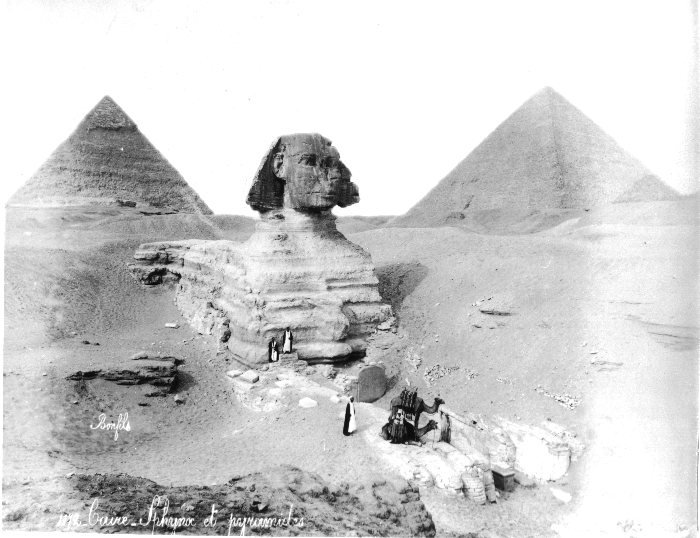The Great Sphinx at Giza.

A statue with a royal head and the body of a lion is called
a sphinx. The word is Greek but its origin may be Egyptian,
from the expression shesep-ankh, "living image". Many
examples are known and the largest and most famous, the Great
Sphinx, is at Giza. It is close to one of the temples
associated with the pyramid of King Rakhaef (also Khaefre, or
Khephren) who reigned between 2518 and 2493 BC. It is about
73.5 m long and 20 m high. Scholars still argue about the
purpose of the Great Sphinx at Giza. Most likely it
represented a deity which guarded the entrance to the temples
and other buildings which formed Rakhaef's funerary complex.
The pyramid, inside which the King's burial chamber was
situated, was the most important part of this complex.
In later times, the Great Sphinx at Giza was regarded as a
statue of the god Haremakhet, the special form of the local
god Horus.
The photograph, taken by Bonfils in about 1880, shows the Great
Sphinx at Giza. Griffith Institute photo. 4225. © Griffith
Institute, Ashmolean Museum, Oxford.
Back to Chariot to Heaven
or
Back to The Sphinx Nose.

